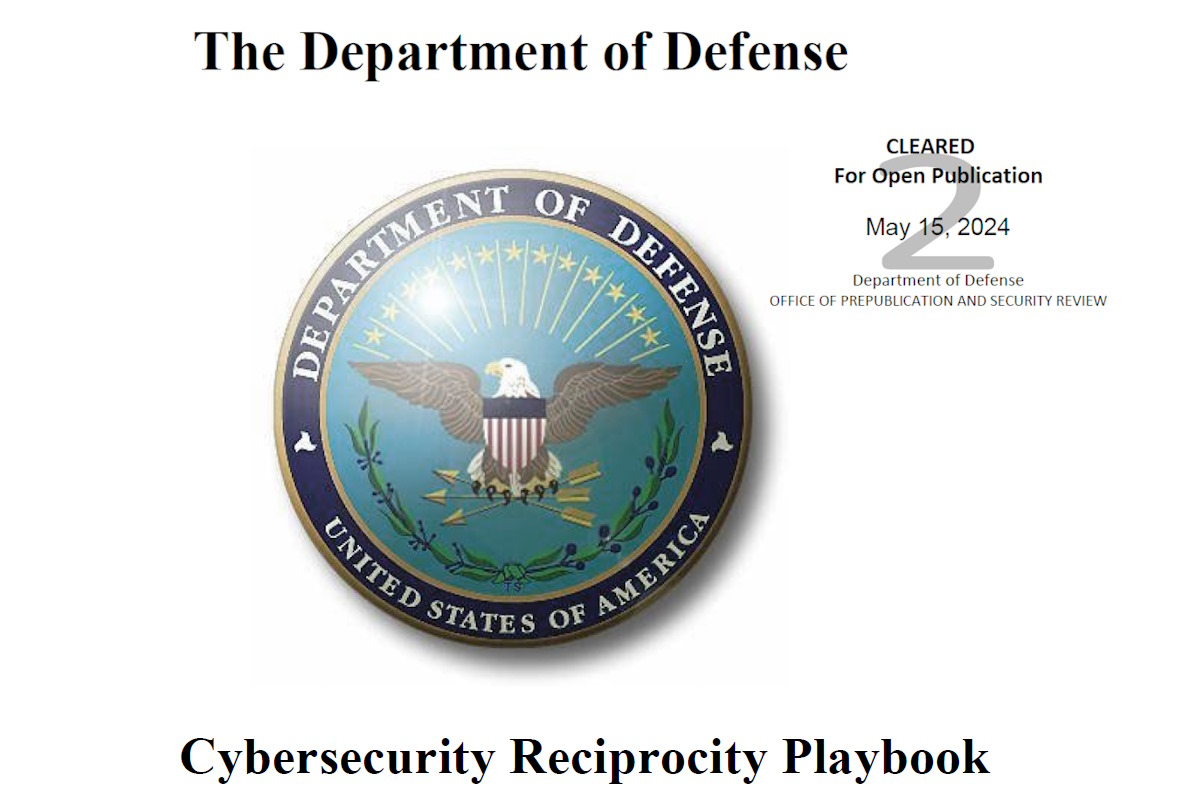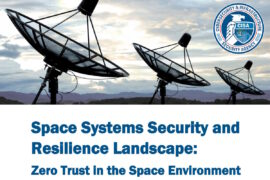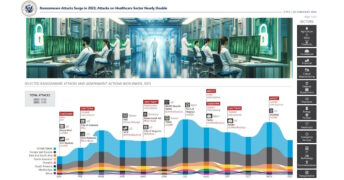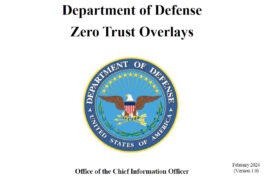DoD CIO debuts cybersecurity reciprocity playbook to streamline system authorizations, boost cybersecurity efficiency

The U.S. Department of Defense (DoD) Chief Information Officer (CIO) has announced the public release of the DoD Cybersecurity Reciprocity Playbook, as referenced in the DSD’s Reciprocity Memo. The playbook offers guidance on implementing cybersecurity reciprocity within DoD systems, defining the concept, outlining its benefits and risks, and providing example use cases. Aligned with DoD Instruction (DoDI) 8510.01, the playbook aims to offer comprehensive information on key Department priorities related to cybersecurity reciprocity.
“To support reciprocity, DoD Components share security authorization packages with affected information owners and interconnected system owners,” the DoD Cybersecurity Reciprocity Playbook outlined. “The re-use of artifacts allows AOs to accept assessments done on systems they intend to deploy rather than repeat the assessments. Acceptance of relevant artifacts from similar assessments results in fewer costly assessments, allowing systems to be authorized more quickly and efficiently.”
Furthermore, in some cases, an organization may want to deploy a capability developed by another organization. It can leverage the existing authorization package if both organizations have similar mission requirements and plan to deploy the same system components with similar dataflows and network architectures.
“In these cases, the receiving organization becomes the system owner and, while not needing to re-authorize the system, it must issue an authorization to use (ATU),” according to the playbook. “This ATU includes a statement by the Receiving AO granting approval for a Granting system to connect to the hosting/receiving system where the systems are linked through inheritance in the RMF Inventory Tool (e.g., eMASS, Xacta). It also provides a copy of implementing documentation to the Granting AO and notifies and provides guidance to subordinate site(s) that the system is authorized to operate and/or connect only in the authorized configuration. Overall, this re-use can result in significant resource savings.”
The DoD identified that failing to leverage reciprocity to the greatest extent possible can lead to redundant and resource-intensive efforts. Without recognizing the assessments conducted by other entities, the organization might be compelled to undertake its own comprehensive evaluations of systems and networks, even when similar assessments have already been performed by trusted partners. This results in a wasteful allocation of time, manpower, and financial resources, hindering the organization’s ability to manage and enhance its cybersecurity posture.
Moreover, the lack of reciprocity undermines interagency collaboration and information sharing. In an era characterized by the rapid evolution of cyber threats, the ability to quickly share cybersecurity insights and findings across different government agencies and organizations is critical.
Reciprocity fosters a culture of cooperation and trust, enabling the DoD to benefit from the expertise and perspectives of other entities, thereby enhancing its ability to detect, prevent, and respond to emerging threats effectively. Not leveraging reciprocity hampers resource optimization and hinders collaborative efforts. Embracing reciprocity promotes efficiency, interagency cooperation, and information sharing, thereby contributing to a stronger and more robust cybersecurity posture that aligns with the evolving threat landscape.
Within the Department, secure configuration guides take various forms, such as STIGs and Security Requirement Guides (SRGs). These guides offer detailed step-by-step instructions for securing specific technologies, platforms, and environments, ranging from operating systems and applications to cloud services. By following these guides, Components establish a consistent baseline security posture, reducing the attack surface and potential vulnerabilities that adversaries could exploit. These guides facilitate reciprocity by providing standardized and approved security configurations.
When a system adheres to the recommended settings outlined in these guides, it becomes easier for other components to trust the security of that system, accelerating the authorization and deployment process. This not only streamlines operations but also enhances the overall security posture of the DoD by maintaining a consistent level of security across the enterprise.
While the SRGs define the high-level requirements for various technology families and organizations, STIGs are detailed guidelines for specific products. STIGs provide product-specific information for validating, attaining, and continuously maintaining compliance with requirements defined in the SRG for that product’s technology area. The security requirements contained within the SRGs and STIGs, in general, are applicable to and required by all DoD-administered systems, all systems connected to DoD networks, and all systems operated and/or administrated on behalf of the DoD.
In March, the Deputy Secretary of Defense (DSD) issued a memorandum stressing the significance of fostering a collaborative culture in cybersecurity testing and reciprocity to expedite the delivery of innovative capabilities while upholding cybersecurity standards. The DSD expects the implementation of testing re-use and reciprocity, except when the cybersecurity risk is deemed too significant.
In a collaborative cybersecurity reciprocity environment, Authorizing Officials (AOs) trust each other and are inclined to grant reciprocity, accepting the risk determination made by another AO for deploying a capability unless there are compelling operational or procedural reasons to refuse reciprocity.
The Receiving AO should strive to accept the risk determination by the Granting AO after a thorough review of the security authorization package, focusing on content rather than the organization or format. Receiving AOs have the authority to decline participation in reciprocity if the content provided does not demonstrate a comprehensive understanding of the security posture, risk assessment, and rationale for the risk determination. Any refusal must be documented and reported to the granting organization’s AO within ten business days.
In cases of refusal, both organizations will collaborate to revise the Authorization to Operate (ATO) package to reach a mutual agreement. If conflicts arise due to reciprocity refusal, attempts should be made to resolve them at the AO level, potentially involving new assessments by the Granting AO. If resolution is not achieved at the AO level, the RMF TAG Secretariat and Chair will be involved, with the AO Council chaired by the DoD CISO serving as a mediator if necessary.
The DoD CIO plays a role in shaping reciprocity policies and frameworks, advocating for standardized processes, promoting best practices adoption, and emphasizing the importance of leveraging trusted assessments from other entities. By providing strategic direction and fostering a unified approach to reciprocity, the DoD CIO enhances the organization’s overall cybersecurity resilience and effectiveness in an increasingly complex threat landscape.
In conclusion, the playbook is considered ‘an invaluable starting point’ for organizations aiming to navigate the complex realm of cybersecurity reciprocity. Acknowledging the ever-evolving nature of the cybersecurity landscape, the defense agency advocates for continuous improvement and collaboration. Therefore, if areas for enhancement are identified or innovative ideas are available to contribute to the playbook, engagement with the RMF TAG Secretariat is encouraged. Through this ongoing dialogue and collective efforts, the aim is to strengthen defenses and implement cybersecurity reciprocity effectively in DoD systems.
Recently, the Department of Defense (DoD) released its Defense Industrial Base (DIB) Cybersecurity Strategy, outlining a proactive plan to enhance the resilience of the Joint Force and Defense cybersecurity ecosystem. Covering Fiscal Year 2024 – 2027, the DoD DIB Cybersecurity Strategy 2024 charts a course for advancing the Department’s internal and industry-focused cybersecurity initiatives. Collaborating with the Defense Industrial Base (DIB), the DoD is leveraging the knowledge and capabilities of industry, academic institutions, and research organizations to realize the strategy’s goals and objectives.










